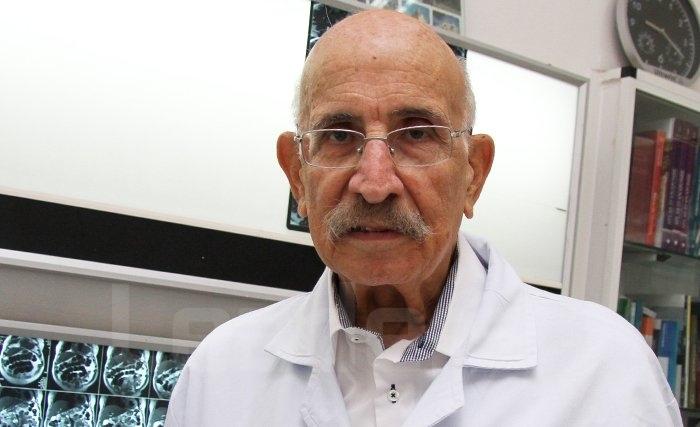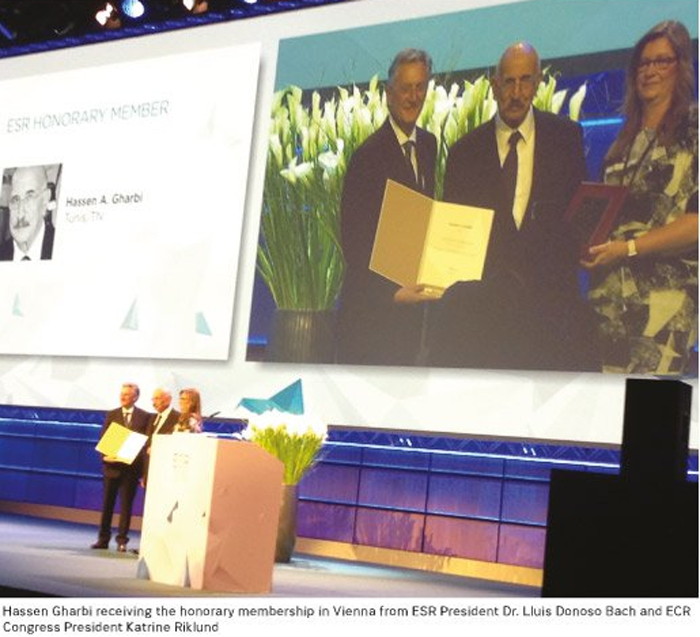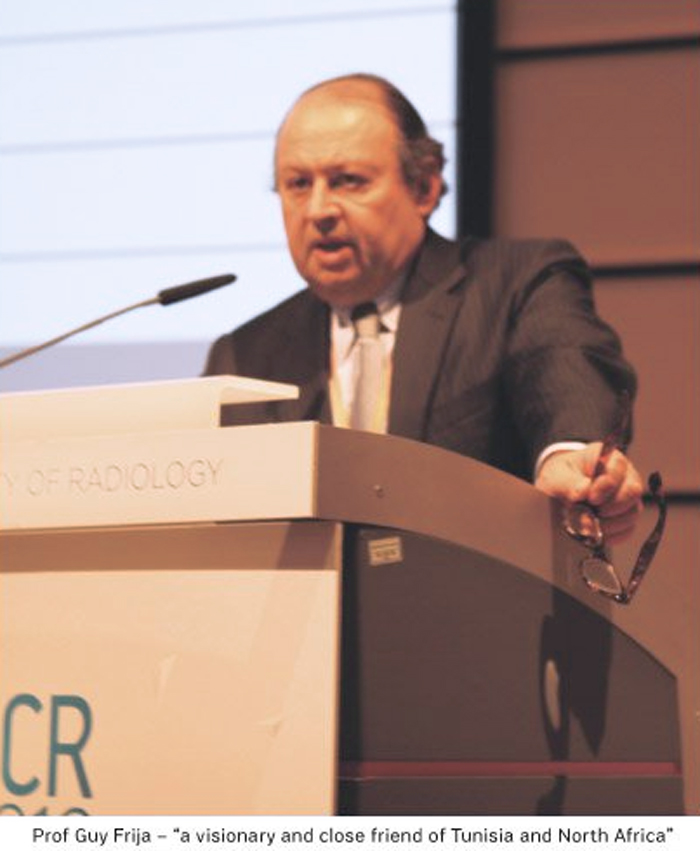Informatics Drives Radiology Today – Interview with Hassen Gharbi

Hassen A. Gharbi from Tunisia was recognised at ECR 2016 in Vienna for being “the first paediatric radiologist in northern Africa” receiving the honorary membership exactly 50 years since he graduated from France. In his brief acceptance speech, Dr Gharbi praised members of the European Society of Radiology for their support all these years, in particular former ESR president Dr Guy Frija, and pledged that he will continue to do “what I did all my life with enthusiasm.”
In an interview with HealthManagement.org, Dr Gharbi displayed his humble side, dedicated to promoting radiology and safety in public health throughout his career of five decades, evident in his people-centric character.
How different is radiology today from 50 years ago? What would you say was the biggest achievement in this technology?
In my view, the main achievement in medical imaging during the last 50 years has been the extraordinary development of informatics in our radiological daily life: preparing our reports, new imaging modalities, digitisation, training, telemedicine, etc.
It was impossible in 1968, when I graduated in Paris, even for the greatest visionary of men to imagine the situation we have today.
During my professional life, I have witnessed three main new modalities introduced in the radiology field: ultrasonography, CT scanners and MRI.
In developing countries, where more than 50 percent of the world’s population has no access to any imaging modality, ultrasonography is the most important tool introduced in the medical imaging diagnosis, epidemiological and guided treatment fields.
I had the chance, for which I was considered a pioneer, to introduce this technology in my country back in 1978, but also at the early stages of the sector in Africa and as a board member since 1991 of the World Federation for Ultrasound in Medicine and Biology (WFUMB ), in several areas in the world, mainly in Africa, Central and South America, and Asia.
Ultrasonography is a wonderful tool, not expensive, easy to use and easy to promote. My generation had the chance and the privilege to introduce this technology, to describe the findings in different pathologies and to prepare the guidelines for the best use of ultrasound for the benefit of our patients.
Personally, I had the chance, with my colleagues in Tunisia, to establish the classification of the hydatic disease, in 1981, published in Radiology, and still used around the world. We promoted – and the World Health Organisation adopted – our strategy for using ultrasound as epidemiological and diagnostic, and guided the treatment for several diseases such as hydatidosis, bilharziosis, etc.
It has been a wonderful adventure for me and for my colleagues around the world to build the foundations for the good use of ultrasonography and to try to avoid its misuse, which could turn out to be very dangerous for our patients. Till now, we continue to work in the same direction. Unfortunately, even today, more than half of the world population does not have access to any imaging modality. This is an unacceptable situation with catastrophic repercussions, but this is a reality and it is our duty to fight on to overcome this problem.
Where would you like to see new technological achievements?
In radiology congresses every year, we observe new techniques and new tools developed by researchers and by companies around the world. For me, the most important is to develop technologies that would allow taking care of patients in poor areas and in rural areas, everywhere. The Internet is a very common tool and available around the world, so, today, teleradiology seems to me the most promising tool in my dreams
You mentioned Dr Guy Frija (a leading member of our Editorial Board) in your acceptance speech. Can you elaborate?
Professor Guy Frija is a great man because of his humanity, efficiency and being an excellent visionary for the future of radiology in all its aspects – technique, strategy, promotion in the developing world. I met Prof. Frija in the early 1990s when he was General Secretary of the French Society of Radiology. We started a great and productive relationship between the Tunisian Society of Radiology, which I headed, and the French society that resulted in a French-Tunisian collaboration agreement in the field of radiology. Today, more than 160 Tunisian radiologists attend the all-important Journées Francaises de Radiologie each October, the most prestigious Francophone congress in the world. This cooperation was the starting point for future agreements between the Moroccan, Algerian, Lebanese, Syrian and of course the French Society of Radiology. More than that, Guy suggested the creation of the African Society of Radiology as an international body, which I did with the help of several colleagues from France, Libya, Tunisia, Kenya and Uganda. Next year, we will have the fourth African Congress of Radiology under the auspices of the International Society of Radiology, the European Society of Radiology and the French Society of Radiology. I thank Guy for the advice he has given us all these years and to help me realise several of my dreams.
How important has the ESR contribution been to improving quality of healthcare in Tunisian hospitals, both on the side of technological development and also education of young radiologists?
This is an important question. Over time, the ESR boards have offered free membership for Tunisian radiologists, but the main obstacle has been the language barrier. Tunisia is an Arabic speaking area, French is our technical language and English is the third language used every day. However, the number of Tunisian participants, radiologists and companies at congresses is growing very fast; around 70 Tunisians participated in ECR 2016.
ECR is a great meeting for us. It is very attractive, easy to access (2-hour direct flights) and greater collaboration is expected in the future, mainly in the field of education.

Where, can you say, is the biggest problem in Tunisia or North Africa today?
Tunisia may be considered a poor country with a per capita GDP income of US $ 4,230 PNB and a population of 11 million, but not so poor when it comes to the medical sector and scientists. We have more than 750 radiologists, graduated and trained in Tunisia, and four medical schools. This is a great number compared to other Africans countries. However, our main need is the constant training of our radiologists, through visiting programmes for professors from Europe or the United States, and scholarships for our doctors to explore different new fields, such as interventional radiology.
Is there “talent” in Tunisia and North Africa, and if so, what advice would you give young medical students?
Good question. I am proud to say that, yes, we have talent in Tunisia and North Africa. Great names are now working in France and in the US, and in different fields, who have had their basic training in Tunisia. My advice to young medical students is that radiology is a wonderful world, they have to work hard and even be ambitious, as the promising future offers unlimited guarantees.
Who inspired you to follow this profession?
My father and my family pushed me into the medical field. My father was a farmer, a great worker, but with limited education. However, he had a great vision. So, I studied biophysics and medicine and became a biophysicist and radiologist.

How important is it to have state-owned vs. private hospitals or diagnostic centres? Which one is more efficient?
I had the opportunity to work very hard, 14 hours a day, in the public hospital and I am now in a private centre. All the time, I was happy and satisfied simply to accomplish my different tasks: clinical, research and teaching. I have no regrets at all. I had the great privilege to have fantastic colleagues from France and Tunisia working with me, and the cooperation with organisations in France, the WHO and IAEA, that provided me with a budget, equipment and scholarships for my three hats: paediatric radiology, biophysics and radiation protection.
I believe the situation today is very different and such facilities are difficult to obtain.
There is no difference in my view between public and private structures – we just need to be hard workers and happy and proud during our work. In the private sector, you can earn more money, while in the public sector there is greater satisfaction of achievement and more honor. But the main pleasure is to be proud of what you do, to take care of patients and to save lives no matter if you are in the public or private sector. The pleasure is the same.
How important is it to have modern management methods in your profession?
Today, there is no question of choice – it is obligatory to be modern in your professional life, there’s no doubt at all. Every day we have to learn more things, so we need to have a team working together. In all my life I have had real friends working together for the best use of our equipment and the best care of our patients.
If you were not a radiologist, what would you be today?
My dream was to be an engineer, in the agriculture or in the electrical field. But, when I look back at my life, I realise being a radiologist and biophysicist was a great calling. I am a very lucky man.